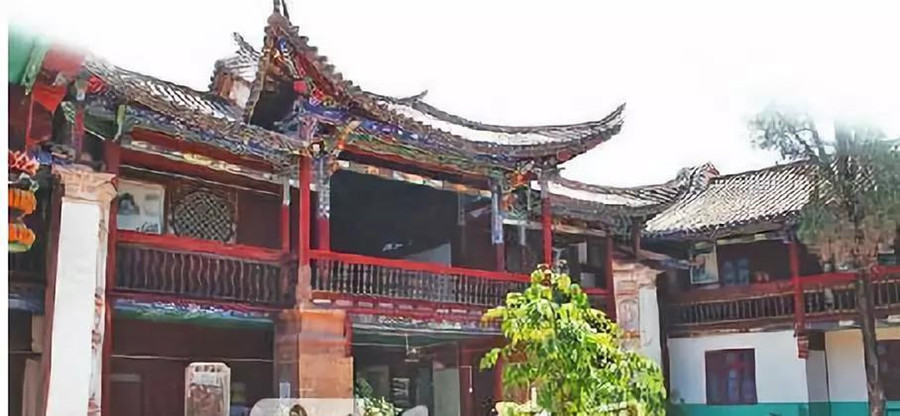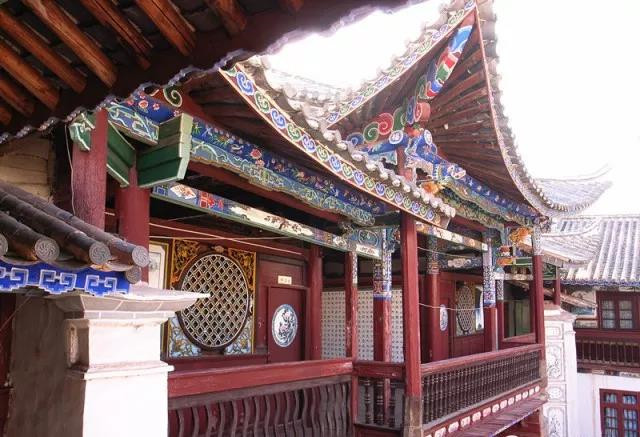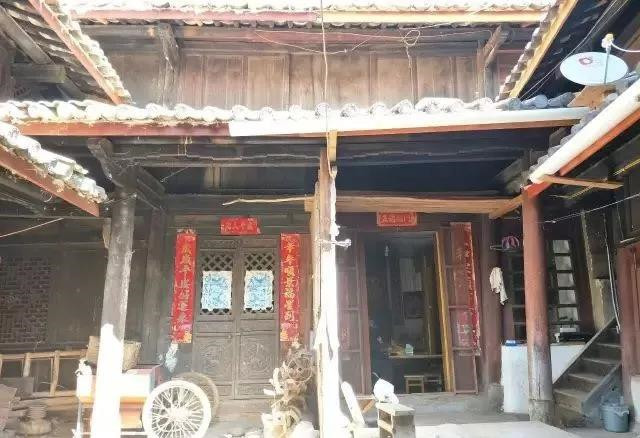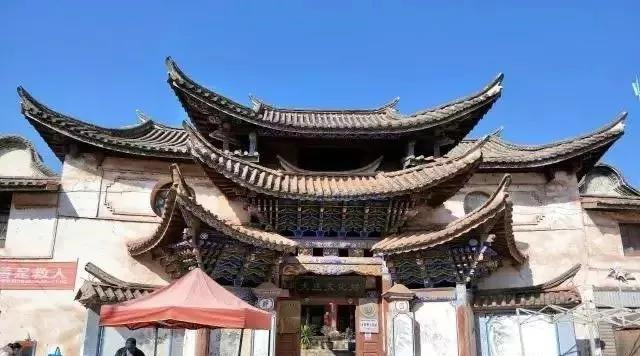
Ancestral Temple of Su Family in Shuangbai County, Chuxiong
Chinese Name:双柏县大庄镇苏家祠堂
English Name: Dazhuang Ancestral Temple of Su Family in Shuangbai County, Chuxiong
Overview
The Dazhuang Su Family Ancestral Temple is located in the center of Dazhuang Street, Dazhuang Town, Shuangbai County, Chuxiong Yi Autonomous Prefecture. It was originally built during the Kangxi period of the Qing Dynasty (1694). When completed, the temple complex included:
- A central hall with three rooms
- Twelve side rooms
- Six frontage rooms (including a stage)
- Twenty-four ear rooms
The layout features a three-sided horse-track corner building, with the central courtyard planted with golden osmanthus, silver osmanthus, cypress branches, and purple bamboo.
Architecture and Features
- Main Hall: The lattice door is intricately carved with three layers of flowers and plants. The stage walls are decorated with a painting titled “Water Overflowing the Golden Mountain” and the Su family genealogy.
- Courtyards and Floors: The four small courtyards and the main courtyard’s floor are paved with hexagonal tiles.
- Entrance: The entrance features two stone statues and two locust trees. Above the gate is a plaque inscribed with “Yiyong Batu Lu” (義勇巴圖魯), granted by Emperor Tongzhi of the Qing Dynasty to Su Siyang (the plaque is now preserved in the Shuangbai County Cultural Museum).
- Murals: The surrounding walls of the courtyard are adorned with lifelike murals depicting flowers, trees, birds, beasts, landscapes, and figures.
- Additional Structures: The building also includes stone flagpoles, Crane Lake, and a screen wall (6 meters high and 12 meters long), contributing to its majestic and grand appearance.
Historical Changes
- Fire Damage: Some parts of the building were destroyed by fire.
- Restorations:
- In 1894, the Su family collected over 40 taels of gold to fund the restoration of the temple.
- During the Republic of China, the temple underwent two more major restorations in the 12th and 17th years.
- Post-1949: After the establishment of the People’s Republic of China, the building served as the office of the Dazhuang Town People’s Government. In 1986, it was managed by the town cultural station.
Current Condition
- Preservation: Although the architectural style of the “four courtyards and five small courtyards, and the horse-track corner building” has been preserved, changes include the disappearance of the stone flagpole and the conversion of the central hall into a two-story building.
- Alterations: The basic style of the frontage rooms, side rooms, and ear rooms remains, but changes have been made to the doors and windows. The hexagonal tile flooring of the courtyards has been replaced with cement, and the original “eight-character” open five-water gate no longer exists.
- Cultural Significance: As one of the few remaining ancient buildings in Shuangbai County, the temple still reflects its profound cultural significance and exquisite carving craftsmanship through its grandeur and detailed artistry. The Dazhuang Su Family Ancestral Temple was renovated into the Shuangbai County Dazhuang Station in 1979, but it has retained its original appearance prior to the renovation.






















